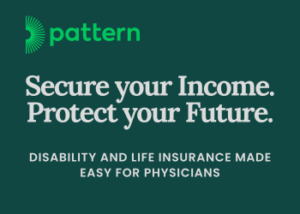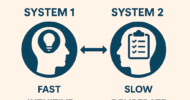After attending the first telehealth awareness week hosted by the American Telemedicine Association, I’ve become aware that there are more possibilities to improve clinical operations and patient experience with telehealth.
In this seminar, Exploring Asynchronous Telehealth and its Critical Role within our Evolving Healthcare System, leading startups share their observations after implementing asynchronous communication features in telehealth.
Could it solve the problem of the lack of access to primary care doctors?
Reframed problem statement
Given high levels of physician burnout, is there a way to alleviate the pressures of doctors with telehealth? What are the repetitive cognitive tasks that are draining time and energy of your health team in your practice? Is there a better way to get the most appropriate care and timely, accurate diagnosis at a reasonable cost from the patient’s perspective?
Applications
The simplest use case is preventive care. Based on known demographic variables and family history, are there health check-ups that need to be scheduled?
What if we can define specific patient pre-consultation workflows so that health risk levels can be identified so that these patients are directed to the best care?
Observations
Telehealth adoption rates refute that there are generational factors that drive adoption. While the younger generation is more adept at technology, startups have observed the older generation has also used their product. If patients are not an issue, what about the demographic of doctors? Are doctors’ most prevalent concerns addressed? Are they getting paid? Is this consultation method in line with their payment remuneration?
Patient intake redesign involves a conversational user interface that is not driven by a self-learning bot, and instead, it is designed with decision logic. It includes self-checking abilities from inputs such as prescribed medication dosages from previous patient visits. The physician avoids decision fatigue.
These startups standardized SOAP form note-taking. Part of the difficulty is teaching the technology to learn the short form mannerisms of the doctor when dictating notes. Startups that do not work with payors do not integrate into any existing EHR. Alternatively, the benefit of integration with existing EHR means that a patient’s health history can personalize recommendations.
The doctor still retains final responsibility to decide whether the person needs further in-person examination or urgent care. The patient will still rely on the doctor’s best judgment. These telehealth products are only a conduit to help doctors deliver care better.
The use of interpretive interviews is part of the patient journey in telehealth. When the patient experience design ensures that routine questions don’t get missed, a higher quality, comprehensive care can be delivered. Questions about the patient’s lifestyle, such as sleep and nutrition intake and key variables that affect the patient’s ongoing health, are included to raise self-care awareness.
There are two types of startups: ones cut out the payer entirely and work directly with the patient, and others that work with payers (insurance companies) directly to improve patient engagement. It is in the interest of insurance companies to lower the expected claims for specific treatments. For example, the startup would create a workflow post-surgery to ensure patient adherence to medication and lifestyle adjustments to ensure proper recovery. This type of automated patient post-operative experience reduces the chances of re-admission.
A telehealth provider indicates that 60 percent of their patients book after-hours appointments. There is an entire focus on acute care that caters to the patient’s work schedule. This suggests that the start of a patient journey with a doctor can begin anytime, even if it is not in real-time.
These leaders question the tried-and-true premise of drawing a causation between physician time spent with patients with the quality of care delivered and health outcomes. In the past, patients got referred to the wrong medical specialists, and doctors got incomplete referrals that lacked sufficient information for meaningful consultation. Because asynchronous communication has significantly improved the quality of the patient data collected, it reduces actual physician interaction time with the patient. After all, the quality of the consultation matters and quality improves when the doctor can arrive at an accurate diagnosis sooner.
From a consultant’s perspective, I ask: for a product to have existential value, is there a business case at stake?
Patients have an obvious interest in this new experience. They want to provide the doctor with adequate information on their health to ensure the right lab tests are issued and make a more informed and accurate diagnosis sooner.
Complicated cases can cause burnout in doctors and their teams quicker. How much are doctors spending on replacing staff due to turnover and training new staff?
This is about enabling doctors to make better clinical decisions
What if technology can help doctors make more accurate clinical decisions?
At this stage, it appears that asynchronous communication products are best suited for patient care navigation. It helps triage urgency of patient cases with a self-guided experience.
The objective is to avoid delays in diagnosis. These products cater to both the young and old generations or people with minor ailments that can be treated easily with access to a primary care physician. It offers patients a track record of their appointments and medications.
Guiding the patient to the right type of care enables doctors and their health care teams to do their best work and deliver a higher quality of care. This can mean improving physician burnout that is caused by high-stress levels due to incomplete patient information at diagnosis.
The better experience? A streamlined patient intake process where the doctor sees comprehensive patient information so they can order the proper blood tests and get to the correct diagnosis sooner.
Jacqueline Chan is a health care executive.
Image credit: Shutterstock.com




























![Antimicrobial resistance: a public health crisis that needs your voice [PODCAST]](https://kevinmd.com/wp-content/uploads/Design-1-190x100.jpg)

![Rethinking medical education for a technology-driven era in health care [PODCAST]](https://kevinmd.com/wp-content/uploads/The-Podcast-by-KevinMD-WideScreen-3000-px-4-190x100.jpg)
